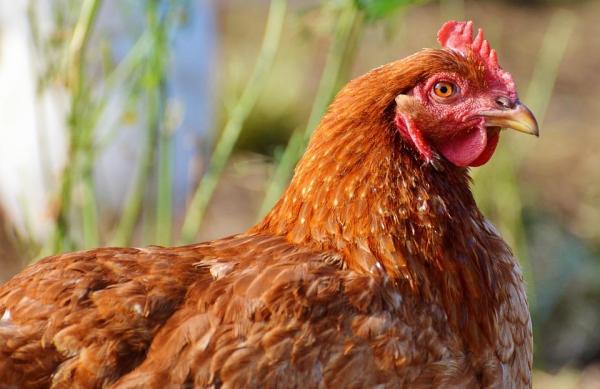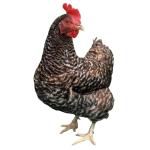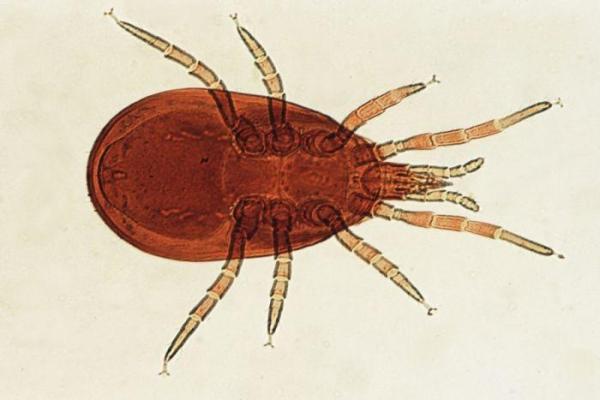Red Mite in Chickens



See files for Hens and roosters
Poultry red mites (PRMs), scientifically known as Dermanyssus gallinae, are minuscule, reddish-brown parasites that feast on the blood of chickens. These nocturnal creatures, primarily active under the cloak of darkness, pose a significant threat to the health and productivity of chickens. PRM infestations have become a widespread concern among poultry producers globally, necessitating the implementation of effective management strategies.
This AnimalWised article delves into the intricacies of poultry red mites, encompassing their identification, symptoms, treatment options, and preventive measures.
What are poultry red mites?
Dermanyssus gallinae, commonly known as the poultry red mite (PRM), is a blood-feeding ectoparasitic mite that infests poultry, particularly chickens. It is a small, reddish-brown mite that measures about 0.6 mm (0.024 inches) in length. The PRM is a nocturnal parasite, meaning it is active at night and hides in cracks and crevices during the day. It feeds on the blood of chickens, typically around the vent and neck area.+
The PRM has a complex life cycle that consists of five stages: egg, larva, protonymph, deutonymph, and adult. The female mite lays eggs in clutches of up to 50 eggs. The eggs hatch into larvae, which molt into protonymphs, then deutonymphs, and finally adults. The entire life cycle takes about two weeks to complete.
Poultry red mites can inflict substantial harm to chickens, jeopardizing their health and productivity. Their relentless feeding habits and ability to rapidly reproduce make them a formidable threat to poultry flocks.

Symptoms in chickens infested by red mites
The poultry red mite (PRM) can cause a variety of health problems for chickens, including:
- Irritation and itching: the bites of PRM trigger intense irritation and itching, compelling chickens to scratch and rub themselves incessantly. This compulsive behavior can lead to abrasions, skin lesions, and feather loss, particularly around the vent, breast, and neck. These wounds leave chickens vulnerable to secondary infections, further compromising their well-being.
- Feather loss: infestations can result in significant feather loss, particularly around the areas where they feed. This loss of plumage disrupts chickens' natural thermoregulatory mechanisms, making them more susceptible to extreme temperatures. In cold weather, they struggle to retain body heat, while in hot weather, they are at risk of heat stress.
- Decreased egg production: the PRM's relentless feasting on the blood of chickens drains them of essential nutrients, causing anemia and weakness. This weakened state leads to a substantial decline in egg production, sometimes by as much as 50%. The economic impact of this reduced output can be significant for poultry farmers.
- Stress: the constant irritation, discomfort, and blood loss caused by PRM infestations induce stress in chickens. This chronic stress weakens their immune systems, making them more susceptible to various diseases, such as respiratory infections and bacterial infections. Chickens with red mite infestation may also exhibit other unusual behaviors, such as hiding or avoiding contact with other chickens.
- Death: in severe infestations, PRM can cause fatal consequences. The persistent blood loss, coupled with stress and secondary infections, can lead to anemia, emaciation, and even death.
You might be interested in this other article, where we discuss what are the most common poultry diseases.
How to get rid of poultry red mites
Controlling poultry red mites can be challenging due to their ability to rapidly reproduce and their resilience to certain treatment methods. However, with proper implementation of effective treatment strategies, PRM infestations can be effectively managed. Here's a comprehensive overview of various treatment methods for PRMs:
Chemical treatment
Chemical treatment is the most common and effective approach for eradicating PRMs. Miticides, pesticides specifically designed to eliminate mites, are available in various forms, including sprays, dusts, and emulsifiable concentrates.
- Sprays: miticide sprays are applied directly to the chicken coop, targeting cracks, crevices, perches, nesting boxes, and any other areas where PRMs may be hiding. Follow the label instructions carefully for proper mixing and application.
- Dusts: Miticide dusts are applied directly to the chickens' feathers, killing PRMs on contact. Use a shaker can to evenly distribute the dust, ensuring it reaches all parts of the chicken's body.
- Emulsifiable concentrates: Emulsifiable concentrates are mixed with water and applied as a spray or dip. They are particularly effective for treating large areas and reaching hidden PRM populations.
Natural remedies for poultry red mite
While chemical treatments are generally more effective, non-chemical methods can be considered as complementary measures or for situations where chemicals are not preferred. Some of these include:
- Diatomaceous Earth (DE): DE is a natural powder made from fossilized diatoms, microscopic organisms with sharp edges. When PRMs crawl over DE, the sharp edges damage their exoskeletons, causing dehydration and death. Apply DE directly to the coop and dust the chickens' feathers.
- Heat treatment: PRMs are sensitive to heat. Exposing the coop to temperatures above 55°C (131°F) for several hours can kill mites and their eggs. However, this method requires specialized equipment and careful monitoring to avoid damaging the coop or harming the chickens.
- Steam treatment: similar to heat treatment, steam treatment involves exposing the coop to high temperatures using a steam cleaner or generator. The hot steam can penetrate cracks and crevices, effectively killing PRMs and their eggs.
You might also be interested in this other article, where we discuss the symptoms that can alert us to lice in chickens, how to treat them effectively, and how to prevent them.

Preventive measures against poultry red mites
Preventing PRM infestations is crucial for maintaining a healthy chicken flock. Implement these measures to minimize the risk of PRM introduction and establishment:
- Maintain coop hygiene: regularly clean the coop, removing droppings, feathers, and debris. Ensure proper ventilation to prevent moisture buildup, creating an unfavorable environment for PRMs.
- Isolate new chickens: quarantine new chickens for a period before introducing them to the main flock. This helps prevent the introduction of PRMs or other parasites.
- Inspect chickens regularly: regularly inspect the chickens for signs of PRM infestation, such as excessive scratching, feather loss, or decreased egg production.
- Treat the coop environment: proactively treat the coop environment with miticides or non-chemical alternatives to minimize PRM populations.
- Regular monitoring: continuously monitor the coop and chickens for signs of PRM activity. Promptly address any infestations to prevent their spread and minimize their impact on the flock.
If you want to read similar articles to Red Mite in Chickens, we recommend you visit our Basic care category.
SPAGANO, O. Control of red mite in laying hen houses . In XLVI Scientific Symposium of Poultry. Zaragoza, 2009.
MARANGI, M; CAFIERO, MA; CAPELLI, G.; CAMARDA A.; SPAGANO, O;GIANGASPERO, A. Evaluation of the poultry red mite susceptibility to some acaricides in field populations from Italy . Experimental and Applied Acarology, 2009, nº48, p. 11-18.
LESNA, I.; WOLFS, P.; FARAJI F.; ROY, L.; KOMDEUR, J. SABELIS,M. Candidate predators for biological control of the poultry network mite . In Experimental and Applied Acarology, 2009, nº48, p. 63-80.







